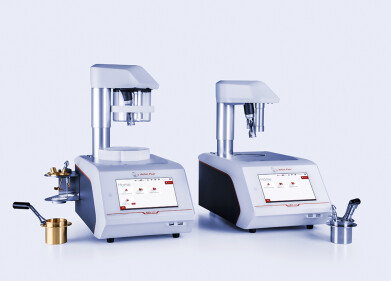Lubricant analysis
5 Factors for Lubricant Analysis
Mar 29 2021
It’s no coincidence that the phrase “well-oiled machine” has entered common parlance as a byword for efficiency and effectiveness. Lubricants play a crucial role in ensuring that a piece of machinery runs smoothly for as long as possible, which is why the lubrication oil sector is likely to bounce back from the fallout from coronavirus stronger than before.
However, not all lubricants are suitable for all purposes. While lubricants might be commonly regarded as containing a base oil and little else, they are actually imbued with any number of different additives and thickeners that have been specifically chosen to enhance their capabilities with regard to a desired outcome. That means that thorough lubricant analysis of the substance must take place to determine whether it is fit for purpose, with the following factors prioritised during the analysis:
Function
Is the lubricant to be used to reduce friction between moving parts? Mitigate mechanical wear and tear from constant use? Protect a surface against corrosion? Filter out unwanted contaminants? Absorb and transfer heat? The specific function of the lubricant in question must be determined before an appropriate selection can be made.
Ingredients
As mentioned above, each lubricant will contain specially selected thickeners in addition to its oil base. These are generally comprised of tiny fibrous particles which enhance the viscosity of the oil and hold it in place. Different thickeners have different advantages and disadvantages, so it’s advisable to read the small print on the list of ingredients in your chosen lubricant and determine whether it’s the right choice for the job in question.
Properties
Depending upon which thickeners are included in the lubricant, it will have different properties from other products. These often revolve around its ability to withstand heat and resist water, as well as its stability under pressure and its pumpability. Again, it’s important to match the lubricant with the right properties to the desired function to achieve an optimum outcome.
Longevity and sustainability
Not all lubricants will have the same lifespan, with synthetic products often offering greater longevity and sustainability than their traditional counterparts that are composed of simple mineral oils. Aside from the lubricant itself, the heat of the engine or machinery it will be applied to is the number one contributing factor to how long it will last, so it’s a good idea to measure the heat of the surfaces in question before making your choice on which lubricant is suitable.
Price
Last but not least, the price tag of a lubricant will greatly influence whether it’s a viable candidate for the purpose you have in mind. As with all business decisions, the balance sheet will narrow your options down for you – but you should always bear in mind that a cheaper lubricant may end up costing more due to the expense of downtime, repair and replacement. Consider all angles before making a decision.
Digital Edition
PIN 26.1 Feb/Mar 2025
March 2025
Analytical Instrumentation - Elemental Analysis for Quality and Process Control at Refineries, for Lubricants and Wear Metals in Engine Oils - Synthetic Lubricants: New Developments - Scaling...
View all digital editions
Events
Apr 08 2025 Birmingham, UK
Apr 08 2025 Kielce, Poland
Apr 08 2025 Ravenna, Italy
Apr 08 2025 Southampton, UK
Apr 08 2025 London, UK



















